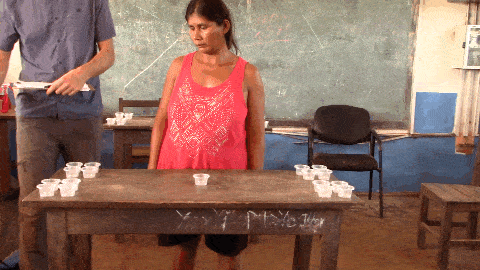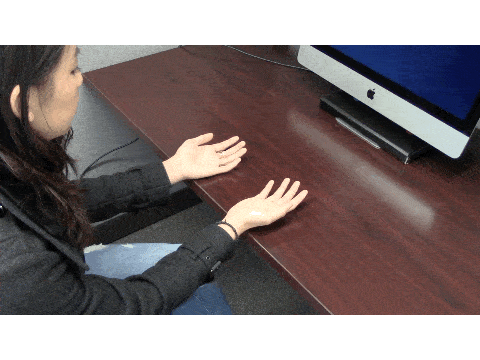Cognitive dynamics
How mental representations are rapidly shaped and reshaped by experience
Cognition happens in context and the context is always changing. Our studies of these dynamics reveal that the mind is exquisitely sensisitve to the structure of experience: Change the structure of people’s experience, and the mind follows. Lab experiments allow us to manipulate individual features of people’s cultural, linguistic, and bodily experience and observe their (transient but systematic) effects on mental representations. The cognitive mechanisms that underlie these moment-by-moment changes are often the same ones that drive cognitive variation at larger timescales (e.g. over development) and across groups.

Flipping the script
In one experiment, we had participants read English text either normally or mirror-reversed – from right to left. The way people read influences the way they conceptualize time, changing their mental timeline in just a few minutes (Pitt & Casasanto, 2020).
Compound cognitive maps
People can remember where objects are either in relation to their own body (e.g. my left) or to the surrounding environment (e.g. to the North). In a study of indigenous Tsimane' adults, we asked people to remember the location of the red block, turn around, and put it in the "same cup" on the other table. As this clip illustrates, we found that people often use both types of spatial reference frames at once, preferring body-centered space on one axis and environment-centered on the other in the very same action (Pitt, 2024).


From manual to mental
In a training study, we randomly assigned participant to count on their fingers either to the right or to the left. Just a few minutes of spatializing numbers in this way on the hands was enough to transiently change their implicit mental mapping of numbers, the mental number line (Pitt & Casasanto, 2020).
References
Articles
2020
Proceedings
2024
- Multidimensional spatial memory: One action, two reference framesIn Proceedings of the Annual Meeting of the Cognitive Science Society, 2024